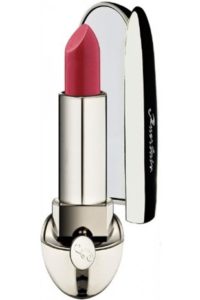In 2018, Guerlain’s 3D trademark application for its iconic “Rouge G de Guerlain” lipstick (the “Product”) was rejected by the European Union Intellectual Property Office (the “EUIPO”) after the EUIPO Board of Appeals found that it lacked distinctiveness sufficient for registration. Guerlain challenged the said decision before the General Court of the European Union (the “General Court”) with the request on grant of registration.
The General Court, in a ruling dated 14 July 2021, numbered Case T-488/20, granted the relief requested by Guerlain, reasoning as follows:
- Assessment of distinctiveness of a proposed 3D trademark is not based upon originality or lack of use within the relevant commercial sector.
- Within a commercial sector characterized by a wide variety of product shapes, a new possible shape is not necessarily tantamount to distinctiveness.
- A product’s design must diverge significantly from its sector’s norms or customs to qualify for 3D trademark protection.
- Alone, a 3D trademark of a haute design product does not necessarily enable consumers to distinguish it from others on offer within the same sector.
- In the context of a 3D trademark application, the focus of aesthetic analysis of the product is not the caprices of subjective attractiveness, but the capacity of the product to generate in the consumer an impression of significant uncommonness.
- The Product’s shape, reminiscent of a ship’s hull or a baby’s bassinet, is unique within the cosmetics sector; the small oval embellishment with its cursive “G” in relief is a design element normatively and traditionally unusual, as is the engineered impossibility of standing the Product upright.
Finding the Product’s shape uniquely recognizable and a departure from cosmetic sector design norms and traditions so significant that the consumer will naturally associate it with Guerlain and, therefore, entitled to 3D trademark protection, the General Court annulled the Board of Appeals’ decision.
In such matters, the Turkish Patent and Trademark Office tends to reject 3D trademark registration if the application is based solely upon a product’s shape, and requires in addition: originality of design, a strongly distinctive character or a word or device element that refers specifically to the applicant.
You may reach the decision numbered T-488/20 dated 14 July 2021 from the given link.






